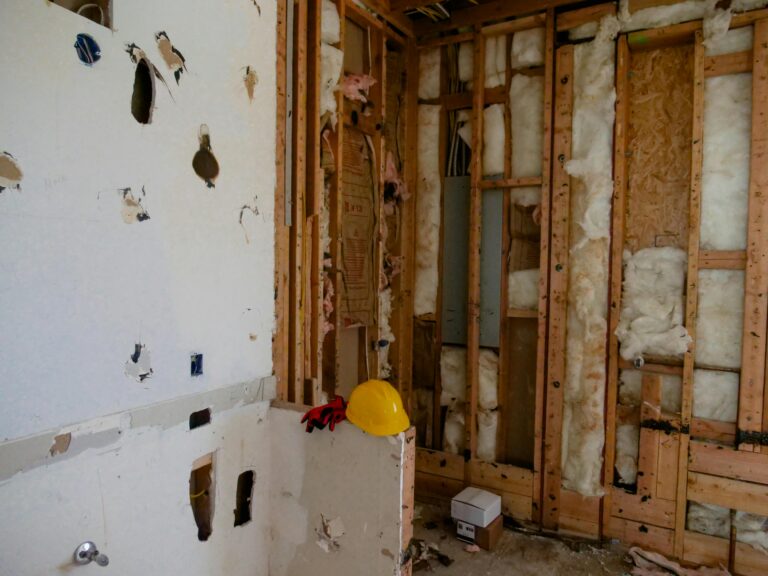Spring Power Washing Guide: Revitalize Your Home’s Exterior
The Art of Choosing the Perfect Paint Finish for Every Room
Picture this: You’ve spent weeks selecting the ideal paint color, only to realize your stunning charcoal gray looks disappointingly flat in the living room, while your pristine white kitchen cabinets show every fingerprint. The secret weapon you’re missing? The paint finish. Often overshadowed by color selection, the sheen level dramatically impacts both aesthetics and functionality. From enhancing architectural details to resisting sticky fingerprints, the right finish transforms paint from mere decoration into a strategic design decision. For DIY enthusiasts and homeowners alike, understanding finishes means avoiding costly redos and achieving spaces that not only look exceptional but stand up to daily life. Let’s explore how to match sheen to surface for flawless, long-lasting results.
Demystifying Paint Finishes: From Flat to High-Gloss
Paint finishes range across a spectrum of reflectivity, each with distinct properties:
- Flat/Matte: Zero shine; excels at hiding surface imperfections but stains easily and isn’t washable.
- Eggshell: Subtle velvety luster (5-10% shine); moderately durable for low-traffic areas.
- Satin: Soft pearl-like glow (25-35% shine); withstands cleaning and light scrubbing.
- Semi-Gloss: Noticeable shine (40-50%); highly resistant to moisture and wear.
- High-Gloss: Mirror-like reflectivity (70-90%); ultra-durable but highlights flaws.
Sheen directly correlates with durability—higher gloss means tighter molecular bonds, creating a harder, more protective surface. Conversely, flatter finishes contain more pigments that diffuse light, camouflaging dents or drywall seams.
Room-by-Room Finish Recommendations
Living Rooms & Bedrooms: Opt for eggshell or satin on walls. These balance elegance with light cleanability. Use flat finishes only on pristine ceilings where no moisture or touching occurs.
Kitchens & Bathrooms: Choose semi-gloss for cabinetry, trim, and doors. Its moisture resistance handles steam and splashes. For walls, satin offers scrubability without overwhelming shine.
Trim, Doors & Millwork: Semi-gloss or high-gloss makes details pop and withstands frequent contact. High-gloss is ideal for statement furniture or front doors.
Hallways & Kids’ Rooms: Durable satin walls endure scuffs and washable markers. Avoid flat—stains become permanent.
Beyond the Room: Factors Influencing Sheen Choice
Lighting: North-facing rooms benefit from satin/semi-gloss to reflect scarce light. High-gloss can cause glare in sun-drenched spaces.
Surface Imperfections: Older walls with cracks? Flat or matte minimizes flaws. Smooth new drywall? Satin adds dimension safely.
Lifestyle: Homes with pets or children need scrubbable finishes (satin+) in high-impact zones. Formal dining rooms can lean into elegant low-sheen options.
Architectural Style: Victorian trim demands high-gloss drama, while modern minimalism often uses uniform satin.
Application Secrets for Flawless Results
Prep Dictates Success: Glossy finishes magnify bumps. Sand walls to 120-grit, fill holes, and use primer—especially when transitioning between sheens.
Tools Matter: Use synthetic rollers for latex paints: microfiber for flat/satin, woven for gloss. Angled brushes prevent drips on trim.
Application Tips:
- Maintain a “wet edge” by painting in 3–4 ft sections to avoid lap marks.
- Apply multiple thin coats rather than one thick layer—especially critical for gloss finishes.
- Reduce brush strokes in semi-gloss by adding a paint conditioner like Floetrol.
Allow proper cure time: 30 days for full hardness. Clean satin+ finishes with a soft cloth and mild soap.
Conclusion: Shine Smart, Not Hard
Selecting paint finishes isn’t about arbitrary rules—it’s a strategic interplay of aesthetics, function, and environment. Remember: flat hides but stains, satin balances beauty and resilience, and gloss delivers drama with armor-like protection. Prioritize high-traffic areas with washable sheens (satin/semi-gloss), reserve flat for low-contact ceilings, and let trim shine to emphasize architectural details. For your next project, test large swatches in different lights before committing. As you wield brushes and rollers, let this be your mantra: “Sheen shapes the scene.” Master this often-overlooked element, and you’ll transform ordinary walls into extraordinary, enduring spaces.







